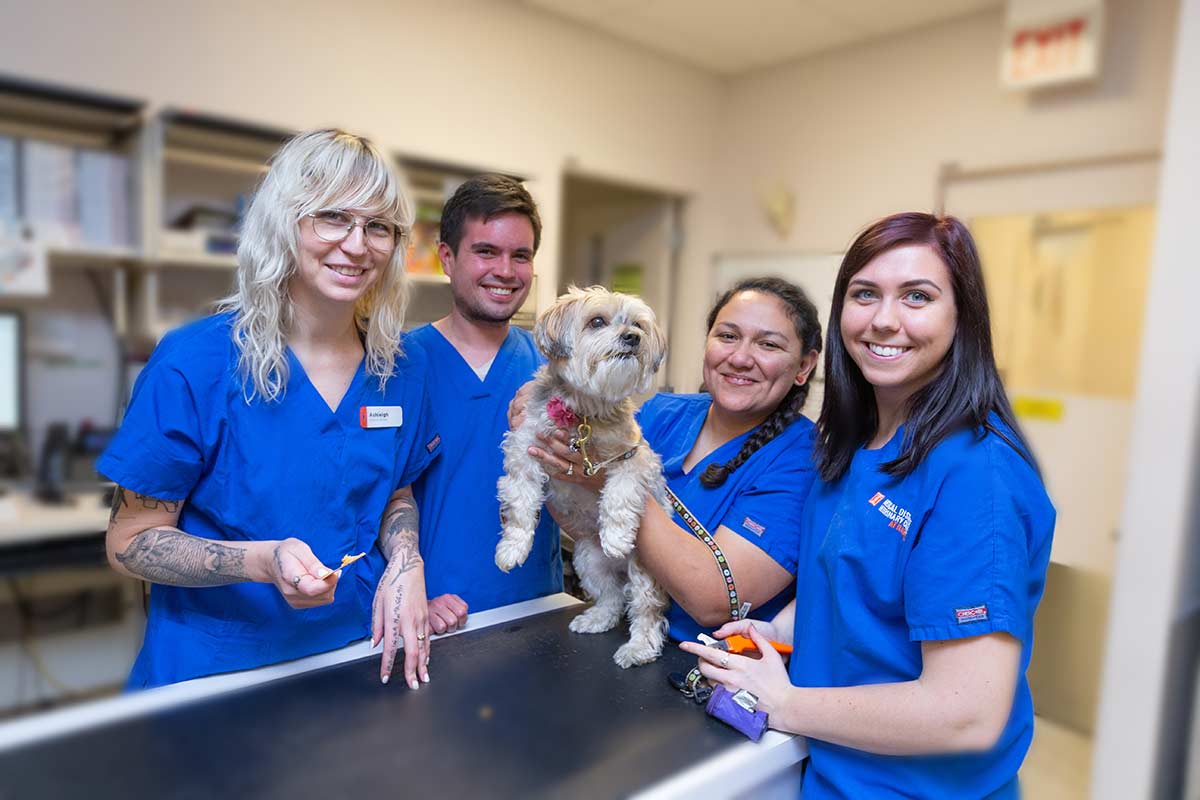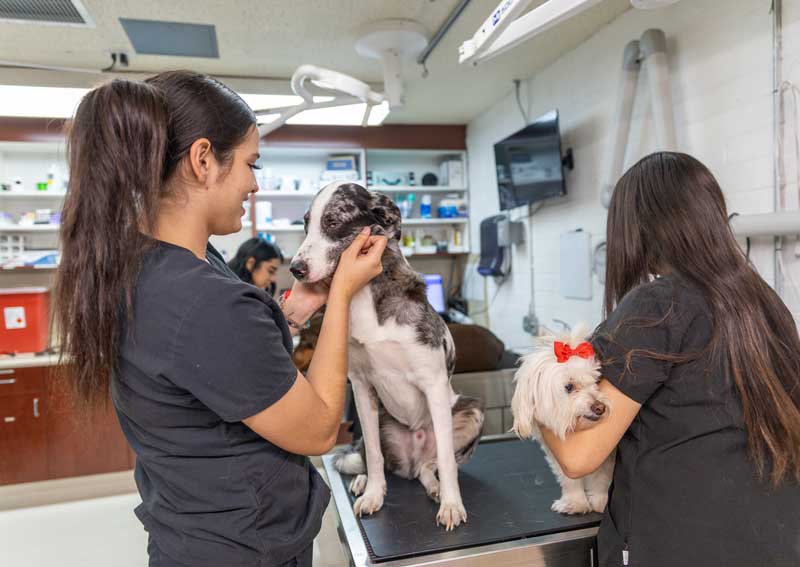A Veterinarian’s Insight Into Long-Term Outcomes of tplo surgery
A Veterinarian’s Insight Into Long-Term Outcomes of tplo surgery
Blog Article
Everything About Vet Surgical Procedure: Understanding the Relevance of Expert Care for Your Pet dogs
Veterinary surgery is a critical part of animal healthcare. It includes various treatments, from routine optional surgeries to immediate interventions. Understanding the intricacies of these surgical treatments can assist animal owners make notified choices. The prep work, execution, and recuperation phases are crucial for ensuring the well-being of animals. With appropriate understanding, owners can navigate the complexities of veterinary treatment. What elements should be considered prior to a pet dog goes through surgery?
Kinds of Vet Surgeries
When a family pet requires surgical intervention, comprehending the numerous types of vet surgical treatments can help family pet proprietors make notified decisions. Vet surgical procedures can be extensively classified into 3 primary kinds: elective, urgent, and emergency situation surgeries. Optional surgical procedures, such as spaying or neutering, are intended treatments that are not instantly serious. Immediate surgical procedures, like those for international body removal, have to be executed soon but are not dangerous in the minute. Emergency situation surgical treatments, such as those attending to severe injury or interior blood loss, are vital and need prompt attention.Additionally, surgeries can differ in complexity, ranging from minimally intrusive laparoscopic treatments to extra considerable open surgeries. Each kind of surgery carries its own threats and recuperation processes. Comprehending these classifications enables pet dog proprietors to participate in meaningful conversations with vets, resulting in far better results for their cherished pets.
Planning for Your Pet dog's Surgical procedure
Planning for an animal's surgical procedure entails an extensive list to guarantee all essentials are covered. Efficient interaction with the vet is important for comprehending the treatment and any required pre-operative steps - animal emergency care bellingham. In addition, having clear post-operative care instructions will certainly assist owners offer the very best assistance for their recuperating pets
Pre-Surgery List Basics
Ensuring a smooth surgical experience for a pet dog needs cautious preparation and interest to information. A pre-surgery list is vital for pet proprietors to follow. Initially, confirming the scheduled surgical procedure date and time is essential. Owners must also verify that their pet has actually fasted according to the veterinarian's guidelines, normally for 8-12 hours prior to surgical treatment. Collecting needed clinical documents, including vaccination history, is necessary for the veterinarian's testimonial. It is likewise advisable to prepare a comfortable space in your home for the animal's healing after surgical procedure. Lastly, proprietors ought to have a strategy for transportation to and from the veterinary clinic, ensuring that the family pet is safe and secure and comfortable throughout the journey. Complying with these actions can greatly enhance the medical experience.
Interacting With Your Veterinarian

Efficient communication with the vet is essential for a successful surgical experience for animals. Proprietors should be prepared to review their family pet's clinical background, consisting of any kind of pre-existing conditions, drugs, and allergic reactions. This details assists the veterinarian examine risks and tailor the medical plan appropriately. In addition, pet dog proprietors need to ask inquiries regarding the procedure, anesthesia, and anticipated results to guarantee they fully understand the process. Making clear any type of doubts can alleviate anxiousness for both the pet dog and the proprietor. It is likewise vital to interact any type of behavioral changes or issues observed in the pet leading up to the surgical procedure. Ultimately, clear dialogue fosters depend on and collaboration, making sure that animals obtain the finest feasible care throughout their surgical journey.
Post-Operative Treatment Instructions
After reviewing the operation with the vet, pet dog owners should concentrate on post-operative care directions to help with a smooth recuperation for their pets. These instructions normally include keeping track of the medical site for signs of infection, such as inflammation or discharge. Pet dogs may require to be kept one's cool and constrained to stop too much activity that might interrupt healing. Pain management is crucial, so owners must adhere to the veterinarian's advice on administering medicines. In addition, dietary limitations may be encouraged to prevent gastrointestinal upset. Normal follow-up visits are vital to assure correct recovery and address any concerns. By sticking to these post-operative treatment directions, pet dog owners can substantially add to their animal's healing and overall wellness.
The Surgery Explained
The surgery for animals encompasses important steps that ensure their safety and security and recuperation. Pre-surgery preparations are important for minimizing threats, while post-operative care guidelines play an essential role in promoting healing. Understanding these components helps animal proprietors navigate the medical experience better.
Pre-Surgery Preparations
Prior to a family pet undergoes surgical treatment, a number of crucial prep work should happen to assure a risk-free and successful procedure. A comprehensive veterinary assessment is essential to assess the pet dog's total health and wellness and recognize any type of prospective risks. This might include blood tests, imaging, or various other diagnostics. The veterinarian will likewise discuss anesthetic choices tailored to the animal's details demands. In addition, pet dog proprietors are normally advised to keep food and water for a defined time before surgery to minimize the threat of difficulties throughout anesthesia. It is necessary for owners to give a total case history, including any type of medications or allergies, making sure the medical team has all essential details. Proper communication and adherence to pre-surgery guidelines can greatly boost the outcome of the procedure.
Post-Operative Treatment Guidelines
Correct post-operative treatment is essential for making certain an animal's recuperation adhering to surgery. After the procedure, pets must be checked very closely for any kind of indications of complications, such as excessive bleeding, swelling, or uncommon actions. It is very important to adhere to the vet's instructions pertaining to medicines, including painkiller and antibiotics. Family pets need to be kept in a silent, comfortable environment to minimize anxiety and promote check my reference recovery. Limiting task is important; short, leashed walks might be needed, but jumping or running ought to be stayed clear of. Regular follow-up visits need to be scheduled to evaluate the recovery procedure. In addition, the surgical site should be kept clean and completely dry, with any indications of infection reported to a veterinarian immediately. Abiding by these standards improves healing results.
Anesthetic and Discomfort Monitoring
Effective anesthesia and pain management are vital components of veterinary surgical treatment, making sure that pet dogs continue to be comfy and safe throughout the procedure. Veterinarians analyze each family pet's individual needs, taking into consideration elements such as age, weight, health status, and the kind of surgery being performed.Anesthesia procedures typically consist of a combination of pre-anesthetic drugs, induction representatives, and inhalant anesthetics, permitting for accurate control over the animal's level of consciousness. Tracking throughout surgery is crucial; veterinarians constantly observe important indications to address any type of potential problems promptly.Pain monitoring techniques might include opioids, non-steroidal anti-inflammatory medications (NSAIDs), and anesthetics, customized to the pet's certain situation. This diverse strategy aids lessen pain and advertises a smoother surgical experience. By prioritizing efficient anesthetic and discomfort monitoring, vet specialists enhance the general welfare of animals undertaking operations, ensuring they get the greatest standard of care.
Post-Operative Treatment and Healing
Adhering to surgical treatment, the emphasis moves to post-operative treatment and recuperation, which is crucial for making certain a pet's safe return to typical tasks. During this duration, family pets require a quiet, comfy atmosphere to help recovery. Owners need to closely monitor their animals for any indicators of discomfort or unusual behavior.Veterinary guidelines typically consist of specific instructions associated with drug management, wound care, and dietary changes. It is vital to follow these referrals to reduce problems and advertise healing. Family pets may require to be limited from strenuous activities, such as running or jumping, throughout their recuperation period (canine tplo surgery).Regular follow-up consultations with the vet enable for monitoring of the animal's development and timely adjustments to the care plan. Offering psychological assistance and companionship can additionally boost a family pet's recuperation experience, helping to relieve stress and anxiety and anxiety. Overall, persistent post-operative care plays a substantial duty in accomplishing a successful recovery
Recognizing Issues After Surgical Treatment
Just how can pet dog owners identify issues after surgery? Understanding of certain signs is important for guaranteeing the well-being of pets throughout recuperation. Usual signs include excessive swelling, soreness, or discharge at the surgical site, which may indicate infection. Additionally, persistent discomfort, shown by whimpering or unwillingness to relocate, must trigger immediate attention. Changes in appetite or water consumption can likewise show issues; a decline in these behaviors may indicate discomfort or distress.Moreover, animal proprietors need to check their animals for any type of uncommon habits, such as sleepiness or difficulty breathing, as these can be signs of major issues. Vomiting or diarrhea complying with surgery might call for immediate vet analysis. Recognizing these difficulties early can greatly affect a pet's recovery procedure, stressing the relevance of vigilance and timely interaction with a veterinarian for any kind of concerning symptoms.
The Role of Veterinary Professionals in Surgical Treatment
Vet specialists play a crucial role in making sure the safety and success of surgical procedures for pet dogs, specifically complying with surgery when monitoring and treatment are vital. These specialists include vets, vet service technicians, and assistance staff, every one of whom add specialized skills to the medical process.Before surgical procedure, vets carry out complete examinations to examine the family pet's health and wellness, making certain that any type of underlying conditions are taken care of. During the treatment, the medical team gives anesthesia, keeps sterilized settings, and keeps an eye on key indicators, very important for decreasing risks.Post-operative treatment is just as substantial; vet professionals observe for complications, handle discomfort, and overview owners on recuperation methods. Their knowledge allows them to identify very early indicators of distress or infection, making certain timely intervention. Eventually, the collaborative initiatives of vet specialists in surgical treatment promote a risk-free environment, promoting the wellness of pets throughout the surgical trip.

Regularly Asked Concerns
Just how Do I Choose the Right Vet Surgeon for My Pet dog?
Choosing the right vet specialist involves investigating certifications, checking out reviews, and examining the center's environment. It is vital to review the doctor's experience with certain procedures and their interaction design when choosing.
What Prevail Misconceptions Concerning Veterinarian Surgeries?
Common misconceptions regarding veterinarian surgeries consist of beliefs that they are always high-risk, unneeded, or just for emergencies. Lots of pet dog proprietors take too lightly the advantages of preventive treatments and the ability associated with veterinary medical treatment.
Just How Much Will My Pet dog's Surgical procedure Cost?
The expense of a pet dog's surgical procedure can differ substantially based upon elements such as the kind of treatment, the veterinarian's experience, and geographical place (24 hour vet near me). Commonly, costs vary from a couple of hundred to a number of thousand bucks

Can My Animal Consume Prior To Surgery?
Before surgical procedure, it is typically advised that animals avoid consuming for a particular period. This fasting helps in reducing the threat of problems during anesthetic. Owners must consult their veterinarian for accurate guidelines tailored to their pet's demands.
Suppose My Pet Dog Has Pre-Existing Health And Wellness Issues?
When a pet has pre-existing health conditions, it's vital visite site for the vet to evaluate dig this these factors prior to surgery. This examination guarantees appropriate safety measures are taken, minimizing dangers and enhancing the pet's general safety and security throughout the treatment.
Report this page